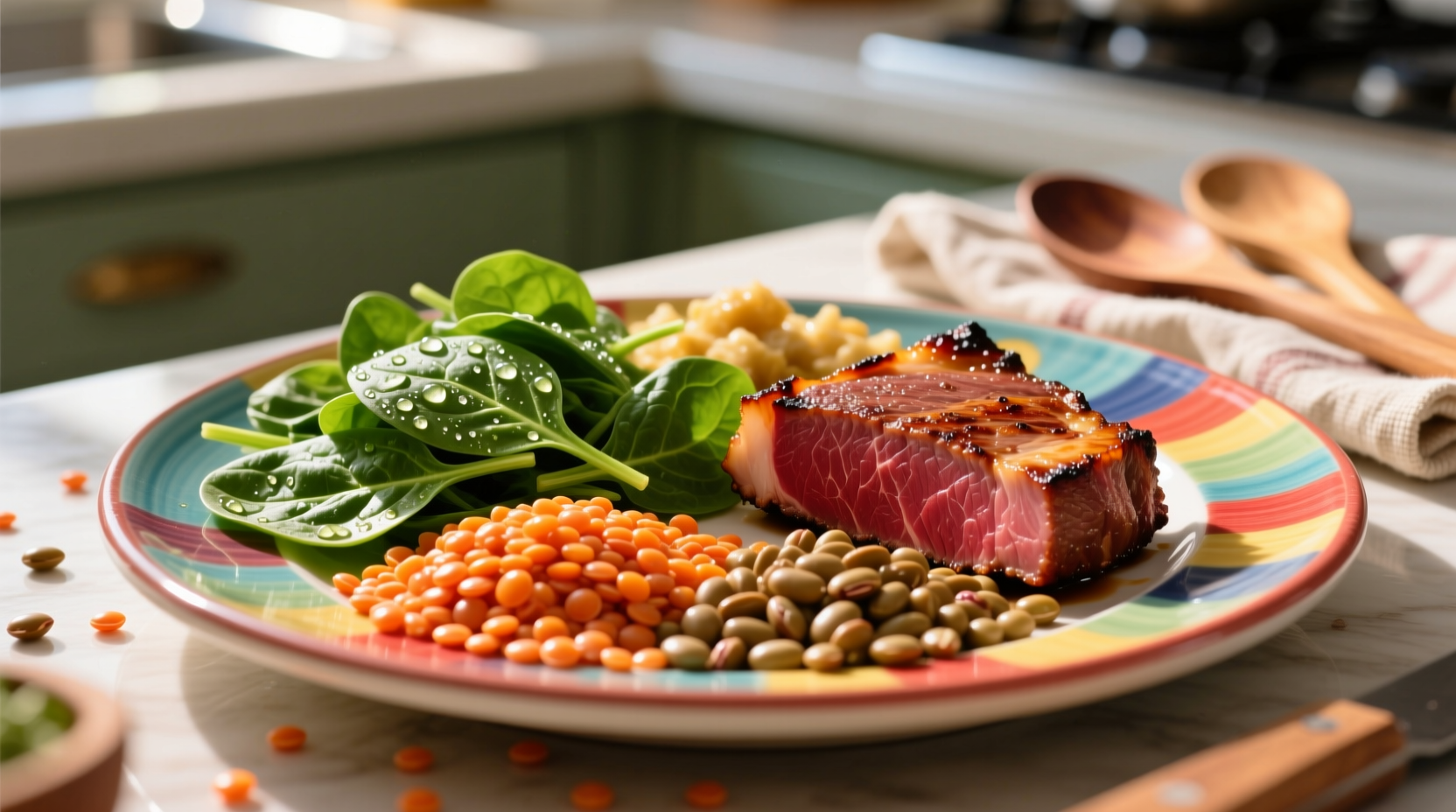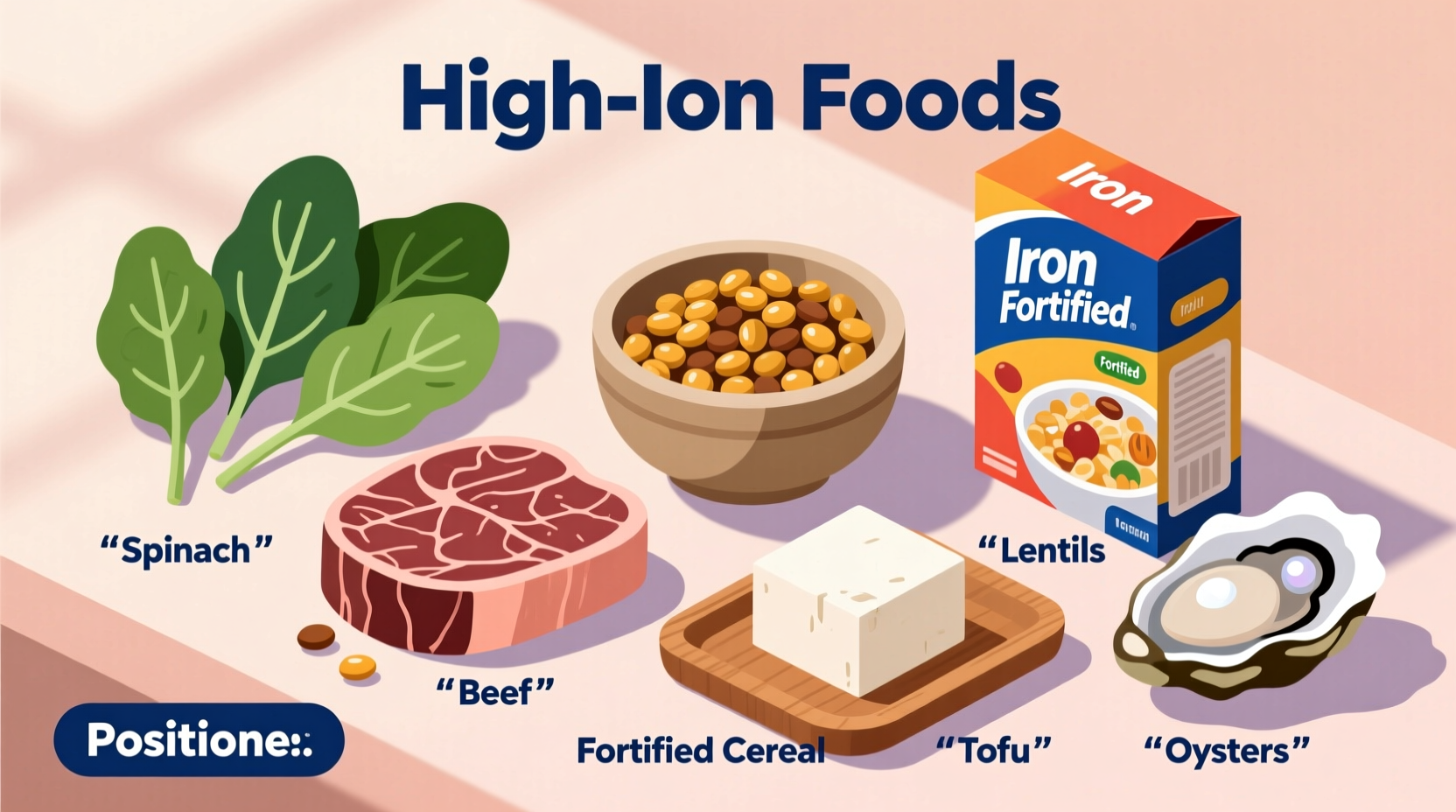Discover the top iron-rich foods you need: red meat (2.1-3.4mg per 3oz), spinach (3.2mg per ½ cup cooked), lentils (3.3mg per ½ cup), and fortified cereals (up to 18mg per serving). This guide reveals which foods provide the most bioavailable iron, how much you actually need based on your age and gender, and practical strategies to boost absorption by up to 300% with smart food pairings.
Iron deficiency affects over 1.2 billion people worldwide, making it the most common nutritional deficiency globally according to the World Health Organization. Whether you're experiencing fatigue, shortness of breath, or simply want to optimize your diet, understanding which foods deliver the most usable iron is essential for maintaining energy levels, supporting immune function, and ensuring proper oxygen transport throughout your body.
Why Iron Matters: More Than Just Preventing Anemia
Iron serves as the critical component of hemoglobin, the protein in red blood cells that carries oxygen from your lungs to tissues throughout your body. But its importance extends far beyond preventing anemia. Recent research published in the American Journal of Clinical Nutrition shows adequate iron levels support cognitive function, regulate body temperature, and even influence your metabolism. The body maintains a delicate iron balance—storing excess but readily releasing it when needed through a sophisticated regulatory system involving the hormone hepcidin.
Understanding Your Iron Requirements
Daily iron needs vary significantly based on biological factors. The National Institutes of Health establishes these recommended dietary allowances:
| Demographic Group | Daily Iron Requirement | Special Considerations |
|---|---|---|
| Men (19-50 years) | 8 mg | Requirements remain stable through adulthood |
| Women (19-50 years) | 18 mg | Menstrual losses increase needs significantly |
| Pregnant Women | 27 mg | Supports fetal development and increased blood volume |
| Vegans/Vegetarians | 1.8x higher | Plant-based iron has lower absorption rates |
Heme vs. Non-Heme Iron: The Absorption Difference That Matters
Not all dietary iron is created equal. Understanding the two types helps maximize your intake:
- Heme iron (from animal sources): 15-35% absorption rate, unaffected by other foods
- Non-heme iron (from plant sources): 2-20% absorption rate, significantly influenced by other dietary components
The body regulates heme iron absorption through intestinal enterocytes, while non-heme iron absorption depends on the current iron status and dietary context. This explains why vegetarians need nearly twice as much iron as meat-eaters to meet requirements.
Top Iron-Rich Foods Ranked by Bioavailability
Animal-Based Iron Powerhouses
These foods provide highly absorbable heme iron:
- Organ meats: Beef liver (5.2mg per 3oz) - contains copper which enhances iron utilization
- Oysters: 4.5mg per 3oz - also rich in zinc which supports iron metabolism
- Grass-fed beef: 2.1-3.4mg per 3oz - provides complete protein for hemoglobin synthesis
- Chicken thighs: 1.3mg per 3oz - dark meat contains more iron than white meat
Plant-Based Iron Sources That Deliver
These plant foods offer substantial non-heme iron, especially when paired correctly:
- Lentils: 3.3mg per ½ cup cooked - also provides 9g fiber and 9g protein
- Spinach: 3.2mg per ½ cup cooked - cooking increases iron bioavailability by 3x
- Fortified cereals: Up to 18mg per serving - check labels for actual iron content
- Pumpkin seeds: 2.5mg per ounce - also rich in magnesium for energy production
- Tempeh: 2mg per ½ cup - fermentation increases iron absorption by 50%

Boosting Iron Absorption: The Science-Backed Strategy
Simply eating iron-rich foods isn't enough—you need to optimize absorption. Research from the NIH Office of Dietary Supplements reveals these proven techniques:
Vitamin C Pairing: The 300% Absorption Booster
Consuming 100mg of vitamin C (about one medium orange) with iron-rich meals can increase non-heme iron absorption by up to 300%. Effective pairings include:
- Spinach salad with lemon vinaigrette
- Lentil soup with tomatoes
- Fortified cereal with strawberries
Avoid These Iron Blockers
Common dietary components can significantly reduce iron absorption:
- Calcium: Reduces absorption by 50-60% when consumed simultaneously
- Tannins (in tea/coffee): Can inhibit absorption by 50-70%
- Phytates (in whole grains): Reduce absorption by 50% unless fermented
Space calcium-rich foods and iron-rich meals by at least 2 hours for optimal absorption.
Dietary Considerations for Special Populations
For Vegetarians and Vegans
Plant-based diets require strategic planning to meet iron needs. The Academy of Nutrition and Dietetics recommends:
- Soaking and sprouting legumes to reduce phytate content
- Using cast-iron cookware (adds 1-3mg iron per meal)
- Consuming fermented soy products like tempeh and natto
- Combining complementary proteins throughout the day
For Pregnant Women
Pregnancy increases iron needs by 50% to support fetal development. Focus on:
- Daily consumption of lean red meat 2-3 times weekly
- Iron-fortified prenatal vitamins
- Pairing plant iron sources with vitamin C-rich fruits
- Avoiding tea with meals (wait 1-2 hours after eating)
Putting It All Together: Your Iron-Optimized Meal Plan
Here's a practical day of eating that delivers 22mg of highly bioavailable iron:
- Breakfast: Fortified oatmeal (7mg) with sliced strawberries (vitamin C boost)
- Lunch: Lentil soup (6.6mg) with lemon squeeze and side salad with bell peppers
- Snack: Pumpkin seeds (2.5mg) with orange slices
- Dinner: Grass-fed beef stir-fry (3.4mg) with broccoli and red bell peppers
When Food Isn't Enough: Recognizing Deficiency
Even with a well-planned diet, certain conditions can lead to iron deficiency. Consult your healthcare provider if you experience:
- Persistent fatigue despite adequate sleep
- Pale skin and brittle nails
- Shortness of breath during mild activity
- Unusual cravings for ice or dirt (pica)
Blood tests measuring serum ferritin (iron stores), hemoglobin, and transferrin saturation provide the most accurate assessment of iron status. Never supplement with iron without medical supervision, as excess iron can cause serious health complications.











 浙公网安备
33010002000092号
浙公网安备
33010002000092号 浙B2-20120091-4
浙B2-20120091-4